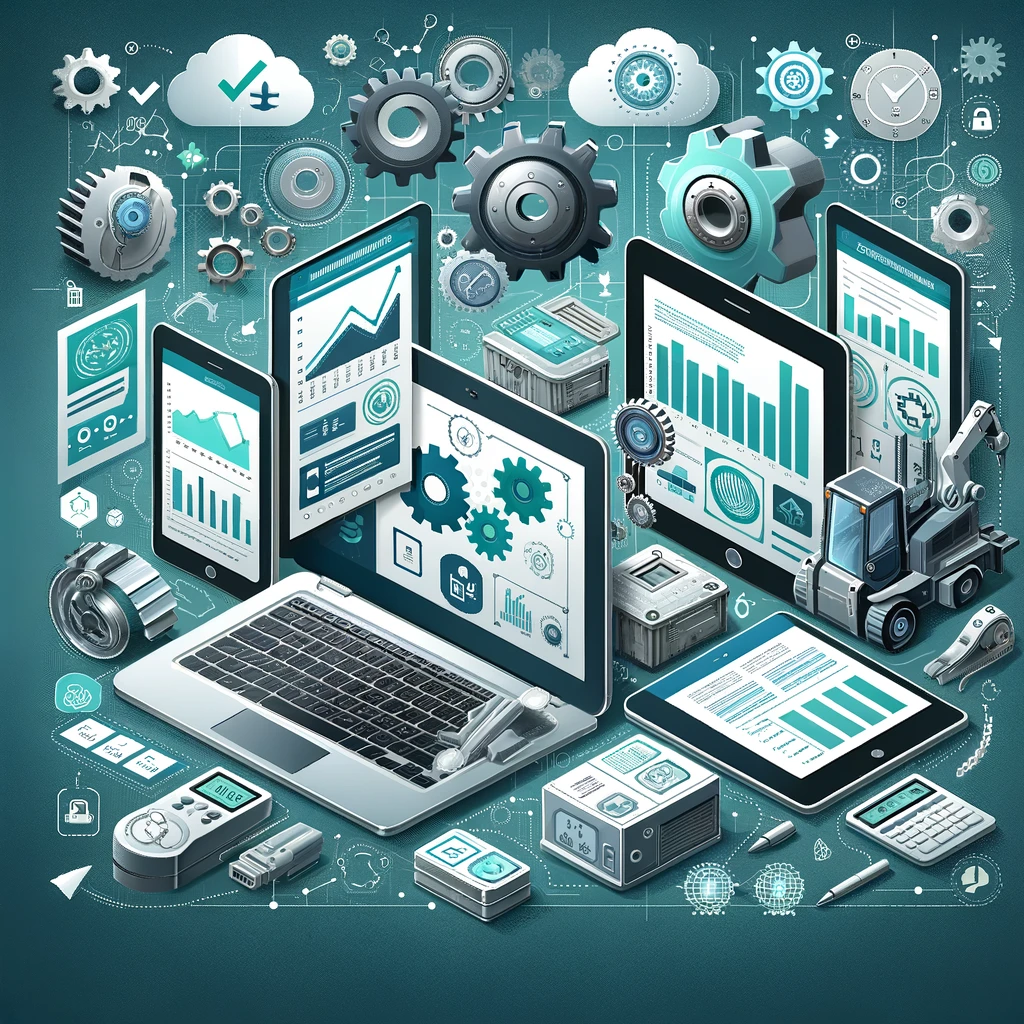In today’s fast-paced industrial and commercial environments, maintaining operational efficiency is more critical than ever. A robust Computerized Maintenance Management System (CMMS) can be a game-changer, streamlining maintenance processes, reducing downtime, and extending the lifespan of assets. However, with so many options available, choosing the right CMMS can be daunting. To help you make an informed decision, here are the top 10 features to look for in a modern CMMS.
1. Mobile Accessibility
One of the most valuable features of a modern CMMS is mobile accessibility. Maintenance teams are often on the move, and having access to the CMMS via smartphones or tablets allows them to:
- Receive real-time notifications about maintenance tasks.
- Update work orders on the go, reducing paperwork and administrative tasks.
- Access critical asset information anytime, anywhere, ensuring that they have the data they need to perform tasks efficiently.
Mobile accessibility improves response times and ensures that maintenance operations continue smoothly, even when team members are out in the field.
2. Predictive Maintenance
Predictive maintenance is a game-changing feature that uses data analytics to predict when equipment is likely to fail, allowing maintenance teams to perform maintenance just in time to prevent breakdowns. Key benefits include:
- Reducing unexpected downtime by addressing issues before they lead to failures.
- Optimizing maintenance schedules, so resources are used more efficiently.
- Extending the lifespan of assets by ensuring they are maintained at the right intervals.
This feature not only saves costs but also enhances overall productivity and reliability.
3. Real-Time Reporting and Analytics
Real-time reporting and analytics are crucial for making informed decisions. A modern CMMS should provide:
- Customizable dashboards that offer at-a-glance views of key performance indicators (KPIs).
- Detailed reports on work order completion rates, equipment downtime, and maintenance costs.
- Data-driven insights that help identify trends, such as recurring issues or inefficiencies in maintenance processes.
By leveraging real-time data, managers can make proactive decisions that optimize operations and reduce costs.
4. Asset Management
Effective asset management is at the heart of any CMMS. A comprehensive system should include:
- Detailed asset histories with information on maintenance tasks, repairs, and performance metrics.
- Automated asset tracking that updates in real-time as maintenance tasks are performed.
- Lifecycle management features that help track asset depreciation and replacement needs.
This feature ensures that all assets are accounted for and maintained properly, reducing the risk of unexpected failures and extending their operational life.
5. Work Order Management
Streamlining work order management is essential for maintaining efficiency. A CMMS should offer:
- Automated work order creation, assigning tasks based on schedules or triggered by specific conditions.
- Prioritization tools that help maintenance teams focus on the most critical tasks.
- Easy tracking and updates to work orders, ensuring nothing slips through the cracks.
Efficient work order management leads to faster response times, reduced downtime, and more effective use of maintenance resources.
6. Inventory Management
Inventory management is a critical feature that helps ensure maintenance teams have the parts they need when they need them. Look for a CMMS that offers:
- Automated inventory tracking with alerts for low stock levels.
- Integration with procurement systems to streamline ordering processes.
- Detailed inventory reports that track usage patterns and help optimize stock levels.
With effective inventory management, you can avoid delays in maintenance due to missing parts and reduce the costs associated with overstocking.
7. Scheduling and Calendar Integration
A robust CMMS should offer advanced scheduling features that integrate seamlessly with your organization’s calendar system. Key capabilities include:
- Automated scheduling of routine maintenance tasks based on time intervals or usage.
- Dynamic scheduling that adjusts based on predictive maintenance insights or emergency repairs.
- Integration with third-party calendar systems, making it easy to coordinate maintenance with other business activities.
Effective scheduling ensures that maintenance is performed on time, reducing the risk of equipment failure and optimizing resource allocation.
8. User-Friendly Interface
The best CMMS is one that your team can easily use. A user-friendly interface is essential for:
- Reducing training time, allowing staff to get up to speed quickly.
- Improving adoption rates, ensuring that all team members use the system effectively.
- Minimizing errors by providing clear, intuitive navigation and task management tools.
A well-designed interface enhances the overall user experience, making it easier for your team to leverage the full capabilities of the CMMS.
9. Scalability
Your CMMS should be able to grow with your business. Scalability ensures that the system can handle:
- Increased numbers of assets as your company expands.
- More users as your maintenance team grows.
- Additional features or modules that may be needed as your maintenance needs evolve.
Choosing a scalable CMMS ensures that your investment remains valuable as your business grows and changes.
10. Vendor Support and Training
Finally, excellent vendor support and training are crucial for maximizing the benefits of your CMMS. Look for a provider that offers:
- Comprehensive training programs for your staff, ensuring they can use the system effectively.
- Ongoing support services, including help desks, online resources, and regular updates.
- Customization options that allow the system to be tailored to your specific needs.
Good support and training help ensure that your CMMS is implemented smoothly and continues to deliver value over the long term.
Conclusion
Implementing a modern CMMS can significantly enhance your maintenance operations, leading to reduced downtime, improved asset performance, and lower costs. By focusing on these top 10 features—mobile accessibility, predictive maintenance, real-time reporting, and more—you can select a system that meets your needs today and adapts to your future growth.
Invest in a CMMS that provides these essential features, and watch your maintenance operations transform, delivering efficiency, reliability, and peace of mind.



